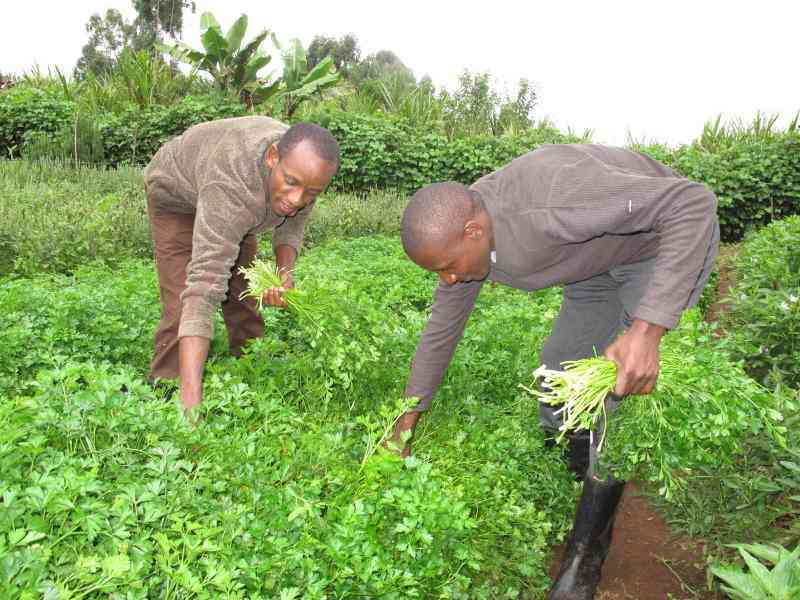Ten reasons your broilers are not adding weight

Dear Dr Messo
My name is Harriet, a broiler farmer in Kiambu County. I would like to take this time and ask the following question on broiler management, what factors cause stunted growth in broilers?
Dear Harriet
There are several factors that impact on growth of a broiler chicken to an appropriate size for the specific market. Locally, our customers specifically retailers, individual consumers and butcheries prefer dressed weights of between 1.1kg to 1.3kg which is equivalent to 1.55-1.75kg live weight from the farm gate before slaughter. Here are 10 factors contributing to stunted growth rates in farmed broilers.
1. High stocking density
Birds naturally require minimum available space for feeding, playing, dustbathing and moving around as they grow. This space must be provided on day one. The rule of thumb for fast growing birds is to provide a minimum space of 1 square feet per bird, the more the better.
2. Poor ventilation
Ventilation is introduction of fresh air in the poultry unit and expulsion of stale gases of ammonia, carbon dioxide and carbon monoxide. It is a good practice to establish minimum ventilation in the units as this will ensure fresh air is always available for better development.
3. Poor lighting
For the first seven days of placement, the birds need 23 hours of light to allow them locate feed and water and stimulate intake. This should then be gradually reduced to ensure broilers have maximum four to six hours of darkness to ensure adequate growth and development. If birds are not attaining target weights, do not introduce darkness, delay until your birds are back to standard weights.
4. Inadequate feed and poor nutrition
If birds are provided with robust feed quality and in adequate amounts with good brooding conditions, the day seven body weight attainment will determine the future slaughter weight target. Do not under feed your birds.
5. Poor chick quality
Buy chicks from reputable sources, a good chick should be clean after hatch, will stand firm, alert, active and free from any deformities. Their navel should be completely healed and should not show red hocks, which is a sign of difficulty in hatching. Chicks of good quality will grow robustly with maximum mortality of 0.5 per cent in the first week.
6. Disease outbreak
Have you done proper cleaning and disinfection of the chicken room (roof, walls, and floor) and the equipment? Did you dispose the old manure far away? Failure to ensure high level of hygiene before next placement is the biggest contributor of stunted growth in broilers due to high viral loads from the previous flocks. After cleaning and disinfection ensure that the house can rest for 14-21 days downtime before restocking.
7. Poor bird welfare
The five freedoms that need to be looked at are a) freedom from hunger and thirst b) freedom from discomfort, c) freedom from injury, pain and disease, d) freedom to express normal behaviour and finally e) freedom from fear and distress.
8. Extreme temperatures
In the first two weeks of a birds’ life, they are not able to regulate their body temperatures. It is therefore important to provide adequate external heat to maintain body temperature of 39-40 degrees centigrade by ensuring the air temperature in week 1 is 32-33 degrees centigrade and gradually decreasing by two degrees every week to stabilise at 26 degrees centigrade by week three. High temperatures will result in low feed intake and poor growth curve. The best source of heat is charcoal or gas.
9. Poor water supply
All chickens require adequate, fresh, cool, clean, and potable drinking water which is regularly treated with chlorine. Birds generally drink water twice as much as the feed they take. If water is of low quality, the intake will be low and subsequently they will not feed well.
10. Vaccination status
Vaccination of donor flocks will ensure maximum protection against common diseases like Reo virus and Gumboro. Similarly, hatchery vaccination of chicks at take-off will guard against most common ailments that retard body growth.
[The writer is Head Vet at Kenchic. For more information contact [email protected] or [email protected]]
Want to get latest farming tips and videos?
Join Us
Share this article on social
 The Standard Group Plc is a multi-media organization
with investments in media platforms spanning newspaper print operations,
television, radio broadcasting, digital and online services. The Standard Group
is recognized as a leading multi-media house in Kenya with a key influence in
matters of national and international interest.
The Standard Group Plc is a multi-media organization
with investments in media platforms spanning newspaper print operations,
television, radio broadcasting, digital and online services. The Standard Group
is recognized as a leading multi-media house in Kenya with a key influence in
matters of national and international interest.
 The Standard Group Plc is a multi-media organization
with investments in media platforms spanning newspaper print operations,
television, radio broadcasting, digital and online services. The Standard Group
is recognized as a leading multi-media house in Kenya with a key influence in
matters of national and international interest.
The Standard Group Plc is a multi-media organization
with investments in media platforms spanning newspaper print operations,
television, radio broadcasting, digital and online services. The Standard Group
is recognized as a leading multi-media house in Kenya with a key influence in
matters of national and international interest.







